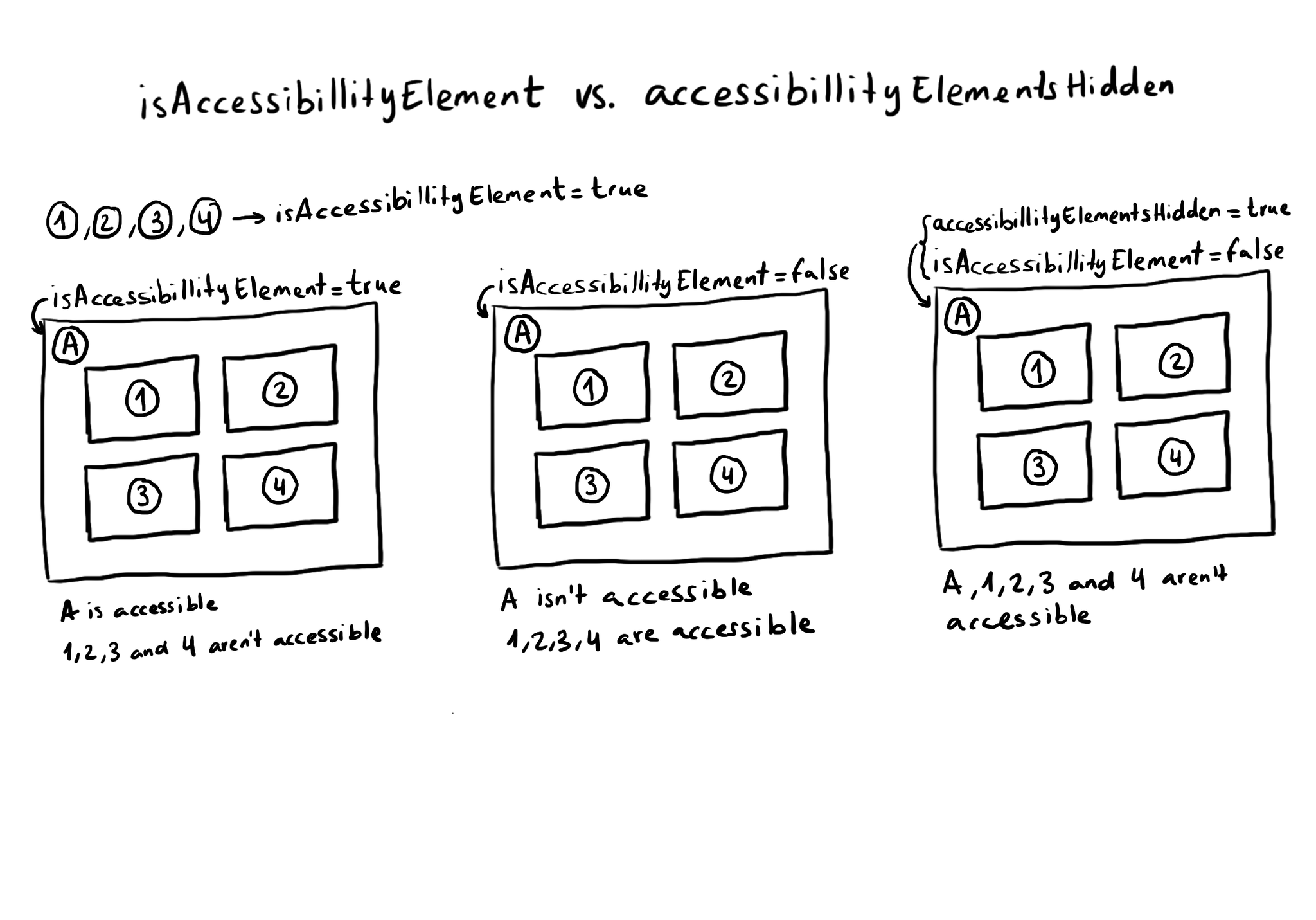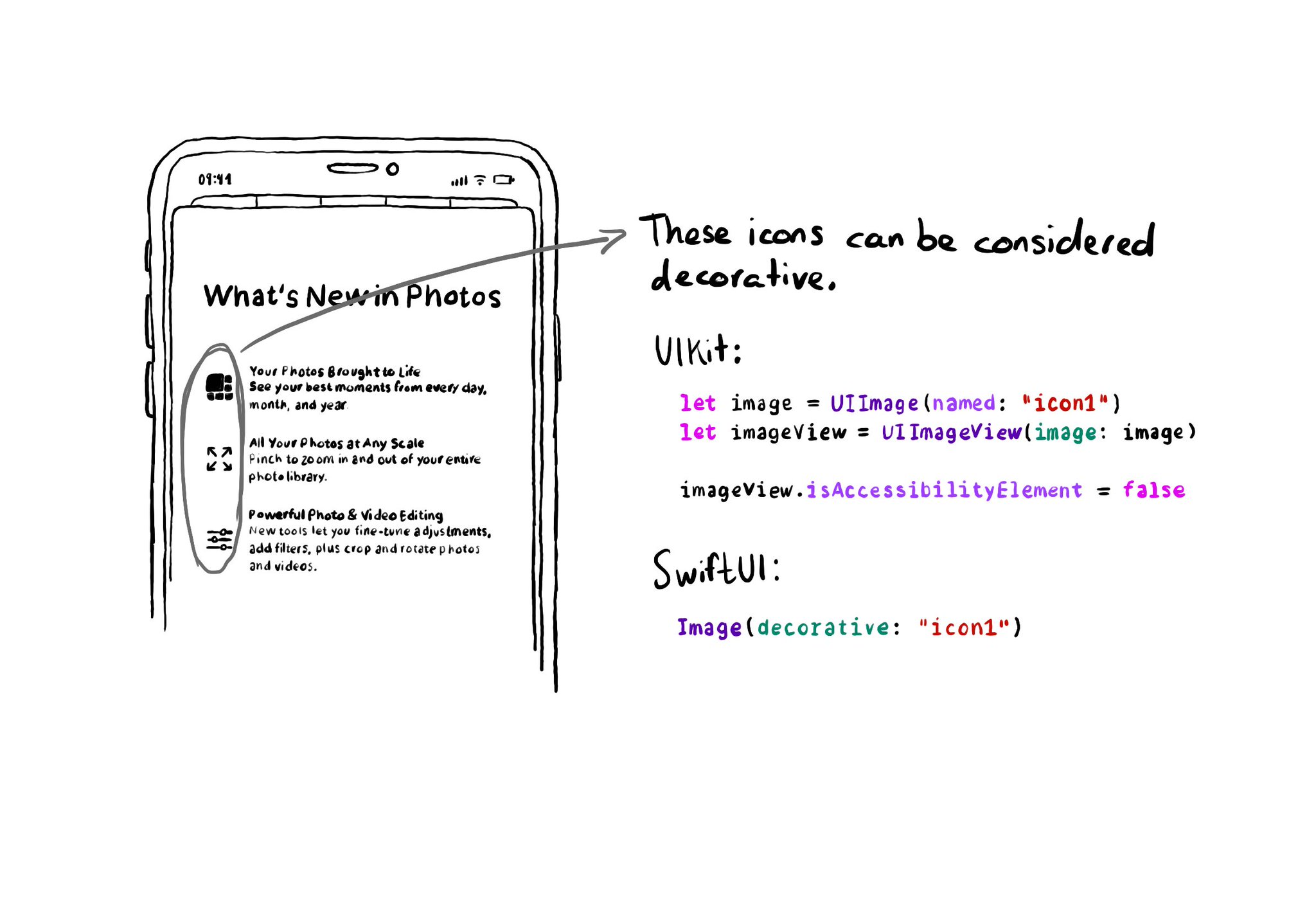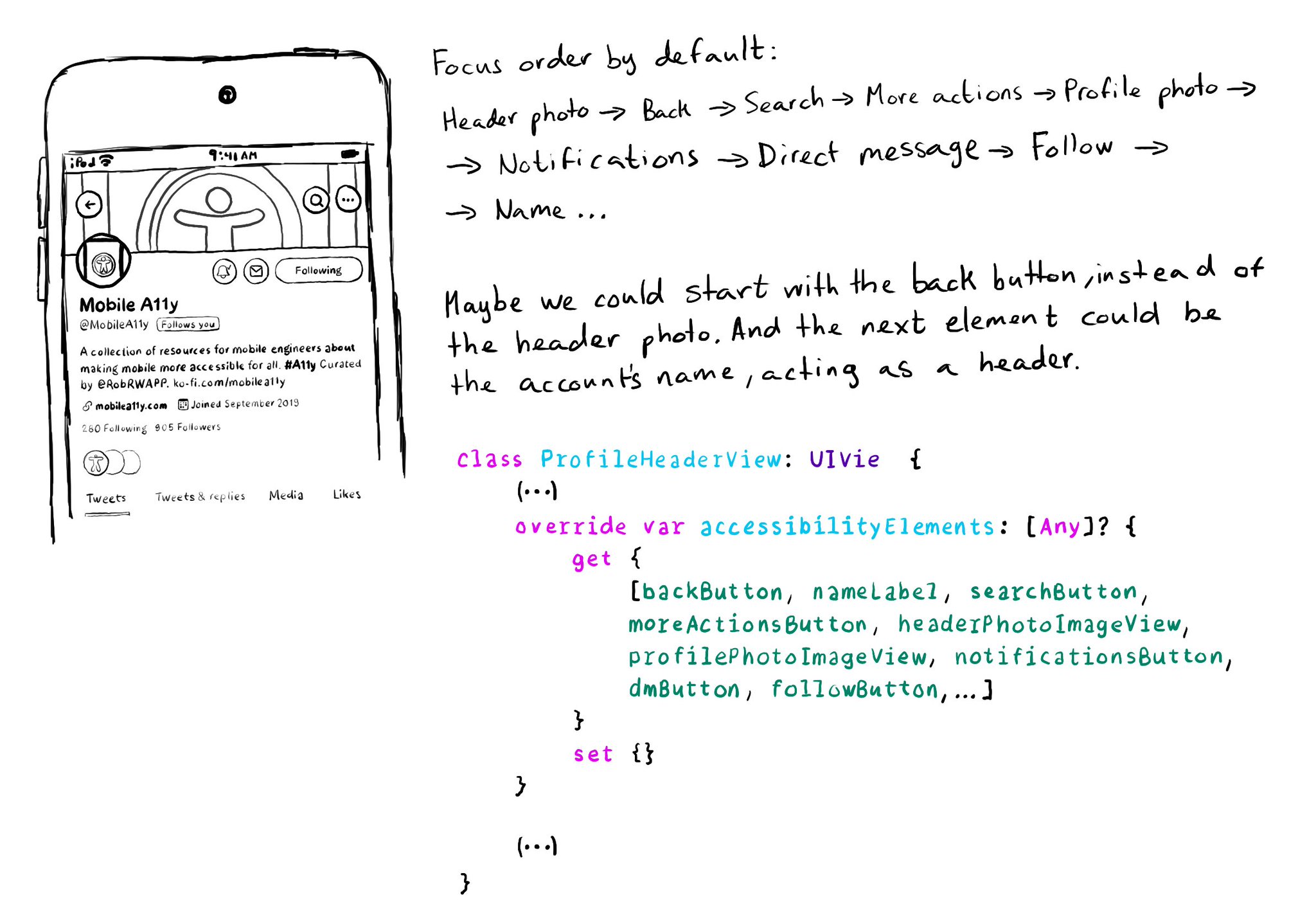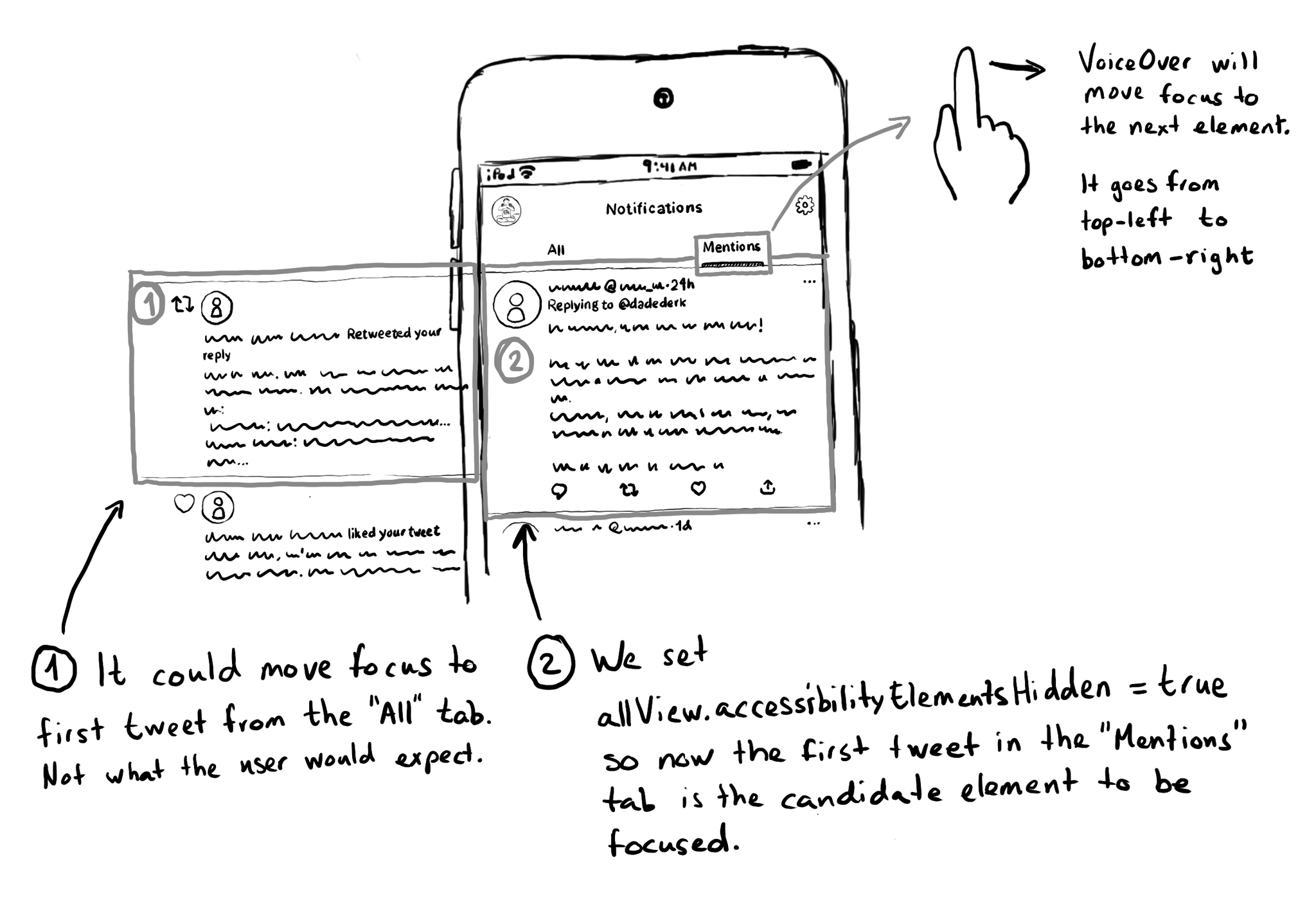What is the difference between isAccessibilityElement and accessibilityElementsHidden? The first one makes the view not accessible, but its subviews can still be accessible. The second one hides the view and all its subviews from assistive tech.

You may also find interesting...

If an image does not convey additional information, maybe it's just used to make the UI look more attractive, it makes sense for VoiceOver to skip it. UIKit: set isAccessibilityElement to false. SwiftUI: create a decorative image explicitly.

It is possible to change the traversing order of accessibility elements by configuring the accessibilityElements array. You should try to avoid it, but one good reason for doing it is if the default order is illogical because of the visual layout.

If you need for a view (and all its subviews) not to be focusable by assistive tech like VoiceOver, you can set its accessibilityElementsHidden property to true. This isn't needed very often, but it can be useful for certain custom experiences.